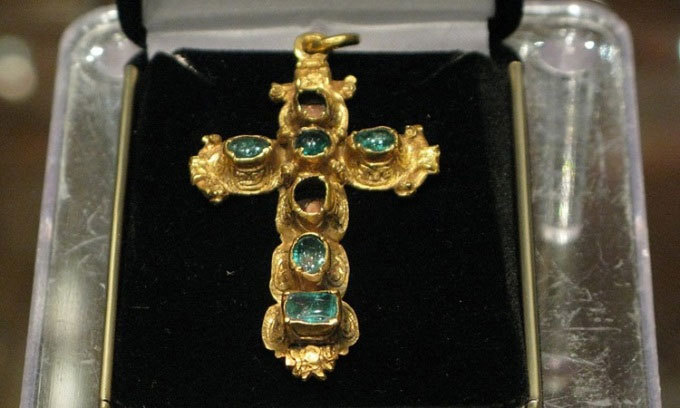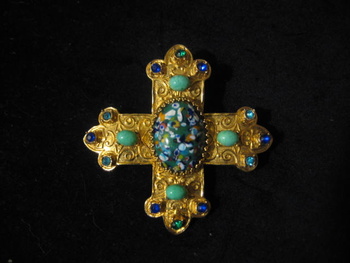The ship Nuestra Señora de Atocha sank in 1622 on its way to carry gold, silver and emerald treasures to Spain .
In September 1622, the treasure ship Nuestra Señora de Atocha sank near the Florida Keys, USA. Currently, $1.1 billion worth of goods on board, including an emerald cross, royal ball, and jewel-encrusted gold ring, are on display in New York, according to Ancient Origins .
 The emerald-encrusted cross recovered from the wreck of the Nuestra Señora de Atocha. (Photo: The Rosen Group).
The emerald-encrusted cross recovered from the wreck of the Nuestra Señora de Atocha. (Photo: The Rosen Group).
On September 4, 1622, Tierra Firme, a treasure convoy consisting of 20 ships loaded with Spanish goods, left Havana port in Cuba to return home. The next day, a storm swept through the Florida Straits and eight of the ships sank.
As a rear guard ship, Nuestra Senora de Atocha (“Lady Atocha”) carried 265 people on deck. The ship’s hull contained large amounts of looted goods from Colombia, Peru, Mexico and Venezuela. The ship’s cargo included 24 tons of silver divided into 1,038 bars, 180,000 silver coins, 582 copper bars, 125 gold bars and plates, 350 chests of indigo powder, 525 bales of tobacco, 20 bronze cannons and 544 kg of wares. crafted in silver. In addition, many other items including jewelry and personal goods are smuggled to avoid taxes.

On October 5, 1622, a second storm struck and destroyed the Atocha ship. For the next 60 years, Spanish salvage experts searched for the warship’s wreckage without success. In 1969, a Florida treasure diver named Mel Fisher began a 16-year search for the Atocha. In 1973, he and his colleagues found 3 gold bars that matched the recorded weight and tally number on the Atocha ship. In July 1985, most of the treasure was discovered in the main body of the ship, including nearly 32 kg of Colombian emeralds, 180,000 silver coins, 24 tons of Bolivian silver, 125 gold bars and a collection of Venezuelan pearls.
Today, a large number of artifacts from the Atocha and Margarita are on display at the Mel Fisher Maritime Museum. Many of them are emerald-encrusted artifacts from the Muzo mine in Colombia. Although some objects were damaged when falling into the sea, three pieces of jewelry taken from the wreck were still in almost perfect condition including the royal ball, Atocha ring and Atocha cross.
The Atocha cross consists of 9 polished emeralds set on a 24K gold cross while the royal ball is likely of Colombian origin, consisting of 37 Muzo emeralds set on a block of 22K gold. The gold Atocha ring has an emerald weighing about 2.5 carats.






